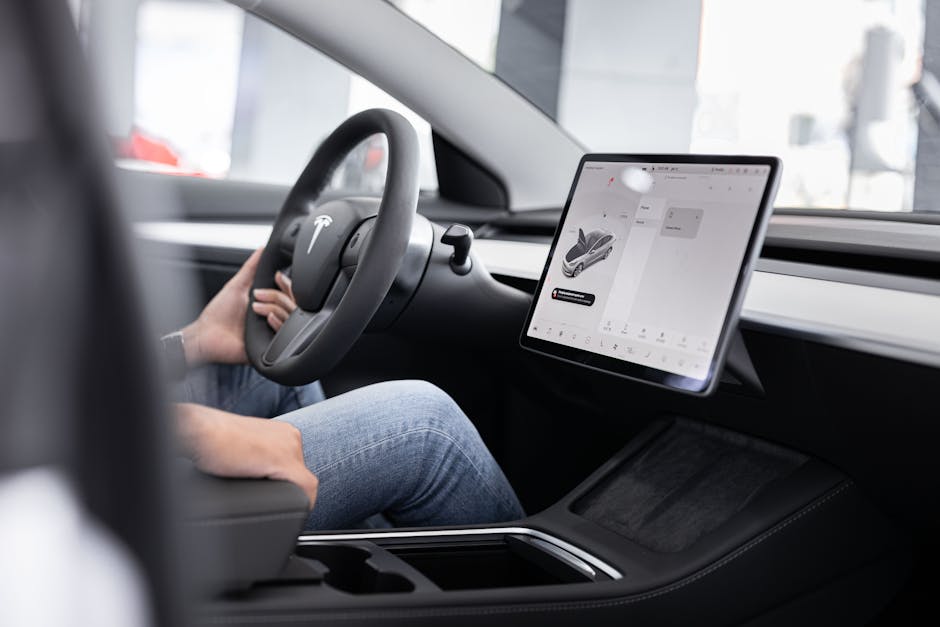Adaptive EVs: Real-Time Data Unleashing Tailored Driving Experiences
The future of driving is upon us, and it’s not just about electric vehicles (EVs)—it's about how adaptive technology is transforming our journeys. As the automotive landscape evolves, real-time data is at the helm, steering us toward personalized, intelligent driving experiences that cater to both individual needs and city ecosystems. In this article, we are about to explore how adaptive EVs harness the power of data to enhance our daily commutes and city life in profound ways.
What Are Adaptive EVs?

Adaptive EVs are electric vehicles equipped with advanced technologies that allow them to learn from user behavior and environmental conditions in real-time. With an increasing reliance on data, these vehicles are not merely modes of transportation; they are becoming interactive companions on our journeys. From tweaking driving dynamics according to traffic conditions to optimizing the vehicle’s energy consumption, adaptive EVs are paving the way for a smarter future.
Real-time data streams from various sensors, GPS systems, and user input enable these vehicles to adapt to their drivers' preferences and needs. For instance, if a driver frequently commutes to a specific location, the vehicle can familiarize itself with the route, adjusting the driving style based on traffic patterns. This not only enhances the driving experience but also contributes to energy efficiency by diminishing range anxiety.
For those interested in exploring more on how EVs influence urban environments, check out our article on how EVs are shaping urban green spaces.
The Role of Real-Time Data in Tailored Driving Experiences

The use of real-time data fundamentally changes how we interact with our vehicles. Imagine your car knowing that every Wednesday you pick up your kids from school at 3:00 PM. It can adjust its departure time based on real-time traffic data or suggest alternative routes if traffic is heavy. This kind of personalization enhances the driving experience, making it more intuitive and convenient while supporting the driver’s daily routine.
How Adaptive EVs Learn from User Behavior

Adaptive EVs use machine learning algorithms to gather and process data, making them increasingly efficient in understanding user preferences. Every journey contributes to a growing database. For example, if a driver frequently opts for a sportier driving mode in urban areas but prefers a more relaxed driving experience on country roads, the car can adjust its behavior accordingly.
Beyond basic preferences, adaptive systems can delve into behavioral patterns, such as when drivers are likely to feel fatigued during long trips. They can then propose breaks at convenient rest stops or recommend a soothing playlist to enhance relaxation. This not only improves comfort but can also improve safety by reducing the risk of fatigue-related accidents.
If you’re curious about more innovative tech in EVs, check out our brief on how AI is transforming the cabin experience in electric vehicles.
Enhancing City Ecosystems with Adaptive EVs

As cities transform to accommodate more EVs, the integration of adaptive technologies becomes vital in building efficient urban ecosystems. The vehicle-to-infrastructure communication (V2I) provided by adaptive EVs allows them to exchange information with city traffic systems real-time. For instance, if traffic congestion is detected ahead, the EV can automatically reroute based on the most efficient alternative paths.
Connectivity and Smart Cities

Adaptive EVs are crucial in the development of smart cities, enhancing urban mobility and traffic management. By leveraging connectivity, these vehicles can continuously receive updated information on road conditions, parking availability, and charging station statuses. For instance, if the battery level drops below a certain percentage, the EV can locate nearby charging stations and guide the driver.
Moreover, such systems create opportunities for implementing effective traffic management strategies, reducing congestion, and minimizing environmental impact. The chatter between vehicles and public transportation systems fosters seamless mobility solutions, allowing a diverse range of transportation options to thrive.
To dive deeper into the dynamics of traffic management due to EVs, consider reading our article on how EVs are transforming traffic management today.
The Future of Adaptive Driving Technology

Looking ahead, the combination of advanced adaptive technologies and evolving data analytic capabilities promises even more groundbreaking developments in EVs. Innovations such as augmented reality (AR) navigation, predictive maintenance, and enhanced connectivity threads between vehicles can push boundaries like never before.
Augmented Reality Meets EV Navigation

Augmented reality technology transforms how drivers navigate. By overlaying real-time data onto the driver’s field of vision, AR navigation can present critical information, including live traffic updates and the location of charging stations. Imagine pulling up to a charging station and having your vehicle autonomously manage the charging process while you run errands.
Such applications not only streamline the driving experience but also contribute to overall safety by ensuring users remain focused on the road. If you want to explore the intersection of AR and EVs, check out our article on how augmented reality revolutionizes navigation in EVs.
The Interplay Between Adaptive EVs and Urban Wildlife

Surprisingly, adaptive EVs also intersect with urban wildlife dynamics. With their quieter engines, EVs have been observed to significantly alter the behavior of urban fauna. City assets, such as parks and green spaces, can modify traffic flows around critical wildlife corridors, maintaining biodiversity while meeting urban mobility needs.
A Natural Connection: Biophilic Design in EVs
As EV infrastructure continues to evolve, there is a growing conversation around integrating nature into EV design. Vehicles designed with biophilic principles promote comfort and well-being for drivers and passengers alike. By enriching environments with natural elements and incorporating designs that connect to natural ecosystems, the future of EVs embraces the harmony between technology and nature.
For insights into how biophilic design can be integrated into EV interiors, look at our discussion on how biophilic design transforms EV interiors.
The Psychological Benefits of Adaptive EVs
The mental and emotional health of drivers can also benefit from the innovations brought on by adaptive EVs. With features that promote a calming atmosphere, such as soundscapes designed to reduce stress and anxiety, these vehicles can significantly enhance the overall driving experience.
Driving Towards Mental Wellness
Imagine a scenario where an EV utilizes sound design to create a therapeutic atmosphere, effectively mitigating road rage and anxiety. Such innovations push the boundaries of how we perceive our driving experiences. If you’re keen on understanding this further, check out our exploration of how EVs enhance mental wellness and calm road rage.
Final Thoughts
As we venture into an era where adaptive EVs dominate the roads, real-time data is becoming the key ingredient for personalizing driving experiences and enhancing urban ecosystems. From tailored driving dynamics and psychological wellness to smart city integration and wildlife coexistence, adaptive EVs are set to define the future of mobility.
The exciting advancements in this domain promise not just improvements in individual driving comfort but also significant contributions to community health, biodiversity preservation, and sustainability. With trends indicating a growing acceptance of EV technology, the days ahead are brimming with potential.
Stay informed, embrace the change, and consider how these adaptations might transform your everyday driving experience as we shift towards a greener and smarter future.



